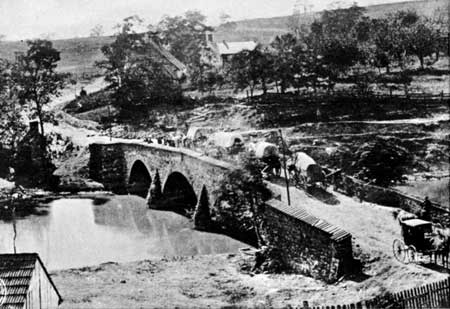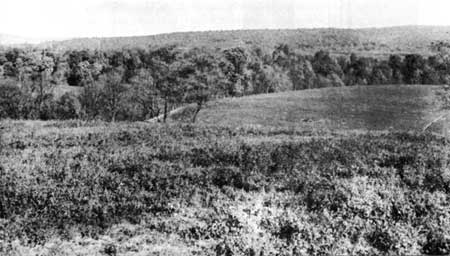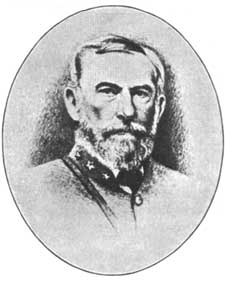|
ANTIETAM National Military Site |
 |

Army supply train crosses Middle Bridge over Antietam Creek. After
ascent of ridge in background, Boonsboro Pike dips into a ravine, then
ascends Sharpsburg Ridge and enters the village.
Courtesy,
National Archives.
McClellan
Concentrates at the Antietam
Against this pretense of power, General McClellan marched cautiously on the forenoon of the 15th, over good roads and in fine weather. By noon, he arrived at the Confederate front with a force of nearly 75,000 men. McClellan hesitated, and the day wore away.
As the early morning fog of the 16th cleared, Lee's artillerists caught sight of Federal guns on the high bank beyond Antietam Creek. The thunder of a prolonged duel between Lee's guns and Brig. Gen. Henry Hunt's powerful Federal batteries soon rolled through the hills. There was no question in McClellan's mind now that Lee intended to hold Sharpsburg Ridge.
In midafternoon of the 16th, McClellan prepared for battle. Maj. Gen. Joseph Hooker's I Corps was instructed to take position opposite the Confederate left on the Hagerstown Pike. Maj. Gen. Joseph Mansfield's XII Corps and Maj. Gen. Edwin Sumner's II Corps were to extend the battleline from Hooker's left to the Smoketown Road and on to Antietam Creek near Pry's Mill Ford. The V Corps, Maj. Gen. Fitz-John Porter commanding, was directed to occupy the center of the Federal line on the Boonsboro Pike.
Burnside was to place his IX Corps just east of the Lower Bridge over Antietam Creek. Maj. Gen. William Franklin's VI Corps was to support the entire front. In the center, on the high east bank of Antietam Creek, and south of the Boonsboro Pike, General Hunt placed four batteries of 20-pounder Parrott rifles, the most powerful cannon on the field.

Meadow just beyond trees bordering Antietam Creek marks top of
bluffs where many of Hunt's Union batteries were placed. This view from
one-half mile in front of Confederate gun emplacements on Sharpsburg
Ridge.
McClellan's plan called for an initial attack on the Confederate left flank on the Hagerstown Pike with the two corps of Hooker and Mansfield. McClellan intended to support this mass charge with Sumner's entire force and, if necessary, with Franklin's corps. If the powerful thrust against the Confederate left should succeed, McClellan would send Burnside's corps across Antietam Creek at the Lower Bridge and strike the Confederate right flank on the ridge southeast of Sharpsburg. Should Burnside succeed in turning the southern end of Lee's line, he would be expected to carry the attack northwest toward Sharpsburg. Finally, if either of these flanking movements appeared successful, McClellan would drive up the Boonsboro Pike with all available forces to smash the Confederate center.
It was a good plan. If the Federal attacks could be delivered in concert, McClellan's preponderance of power must stretch Lee's smaller force to the breaking point. But the story of Antietam is one of piecemeal Federal attacks—a corps here, a division there. This failure in execution allowed Lee to shift troops from momentarily quiet sectors to plug the gaps torn by the succession of Federal attacks. As each threat developed, Lee rushed his troops there and beat it back. Taking advantage of his interior lines, he repeatedly achieved a local advantage of numbers, though larger Federal contingents were always nearby.
 Brig. Gen. W. N. Pendleton, Lee's chief of artillery. From Miller's Photographic History of the Civil War. |
 Brig. Gen. Henry Hunt, McClellan's chief of artillery. |

|

|
|
Last Modified: Mon, Mar 4 2002 10:00:00 pm PDT |


